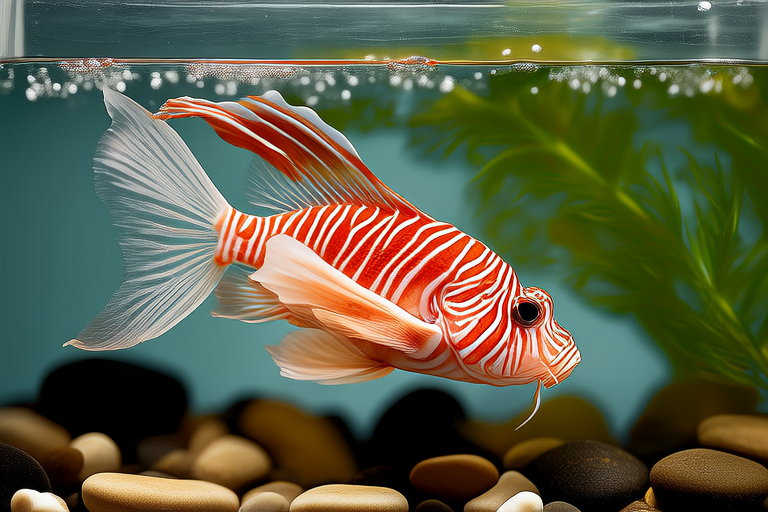
DIY Aquascape Ideas That Will Make Your Goldfish Feel Like a King
Creating an aquascape for your goldfish is more than just setting up a tank; it’s about crafting a thriving ecosystem that mimics their natural environment. This guide will walk you through the essentials of aquascaping for goldfish, offering DIY ideas using natural elements like driftwood, rocks, and plants. We’ll also discuss crucial aspects such as water flow, lighting, and filtration systems, ensuring a healthy habitat. Finally, we’ll provide maintenance tips to keep your goldfish kingdom vibrant and clean.
The Basics of Aquascaping for Goldfish
Aquascaping involves arranging aquatic plants, rocks, and other decorations to create a visually appealing and functional underwater landscape. Goldfish are social creatures that thrive in spacious environments with plenty of hiding spots and open areas for swimming. They require at least 20 gallons of water per fish, so a larger tank is ideal if you have multiple goldfish.
Goldfish are messy eaters, producing a significant amount of waste. Therefore, a robust filtration system is essential to maintain water quality. The tank should be equipped with a biological, mechanical, and chemical filter to remove toxins and debris. Additionally, goldfish prefer a gentle water flow to simulate their natural habitats.
DIY Aquascape Ideas Using Natural Elements
Driftwood and Rock Formation
This aquascape idea utilizes driftwood and rocks to create a cave-like structure where your goldfish can hide and explore. Driftwood provides a natural look and adds tannins that slightly acidify the water, beneficial for some plant species.
- Choose Suitable Driftwood: Select smooth, non-toxic driftwood pieces that fit your tank size. Ensure they are clean and free from harmful chemicals.
- Arrange Rocks: Use smooth river rocks to build small walls or caves around the driftwood. This creates a layered effect and provides additional hiding spots.
- Plant Placement: Introduce low-light-loving plants like Java Fern or Anubias around the driftwood and rocks. These plants help oxygenate the water and provide shelter.
- Water Flow: Position the filter outlet to direct water flow gently over the rocks and driftwood, simulating a natural current.
Live Plant Garden
A lush garden of live plants not only beautifies the tank but also benefits the goldfish by providing oxygen and reducing ammonia levels. Choose hardy plants that can withstand goldfish activity.
- Select Plants: Opt for robust plants like Hornwort, Water Sprite, and Dwarf Sagittaria. These plants are less likely to be uprooted by active goldfish.
- Prepare the Substrate: Lay down a nutrient-rich substrate, such as laterite or aquarium soil, to support root growth. Cover this with a layer of gravel or sand.
- Planting: Gently plant the chosen species, ensuring roots are firmly anchored in the substrate. Space them out to allow room for growth.
- Maintenance: Regularly trim any overgrown leaves to prevent overcrowding and maintain water clarity.
Artificial Plant and Decorative Rock Arrangement
For those who prefer a lower-maintenance option, artificial plants and decorative rocks offer a realistic look without the upkeep. This setup is ideal for beginners or those with limited time.
- Select Artificial Plants: Choose high-quality, durable artificial plants that mimic real aquatic vegetation. Ensure they are safe for fish and easy to clean.
- Arrange Decorative Rocks: Place decorative rocks around the tank to add depth and visual interest. Arrange them in clusters or along the back wall for a dramatic effect.
- Lighting: Install a full-spectrum LED light to enhance the colors of the artificial plants and rocks. Set it on a timer for 8-10 hours daily to simulate day-night cycles.
- Filtration: Ensure the filtration system is strong enough to handle the bio-load produced by the goldfish and the artificial plants.
Importance of Water Flow, Lighting, and Filtration Systems
Proper water flow, lighting, and filtration are vital for maintaining a healthy aquatic environment. Goldfish need a consistent, gentle current to stimulate their gills and aid digestion. Too much flow can cause stress, while too little can lead to stagnant water.
Lighting plays a dual role in an aquascape. It not only enhances the aesthetics but also supports plant growth. Full-spectrum LED lights are recommended for their energy efficiency and ability to replicate natural sunlight. Ensure the lighting cycle is consistent, typically 8-10 hours per day.
Filtration systems are crucial for removing waste, excess nutrients, and harmful substances from the water. A combination of mechanical, biological, and chemical filtration ensures the water remains clear and safe for your goldfish. Regular cleaning and maintenance of the filter are necessary to prevent clogging and ensure optimal performance.
Maintaining the Aquascape and Keeping the Environment Stimulating and Clean
To keep your aquascape thriving, regular maintenance is key. Perform weekly water changes, about 10-20% of the total volume, to remove accumulated toxins and refresh the water. Test the water parameters regularly to ensure pH, ammonia, nitrite, and nitrate levels are within safe ranges.
Stimulate your goldfish by providing interactive toys and hiding spots. Floating objects or tunnels can encourage exploration and reduce boredom. Rotate these items periodically to keep the environment fresh and exciting.
Lastly, observe your goldfish regularly for signs of stress or illness. Healthy fish are active and exhibit normal behaviors. Any changes in appearance or behavior should prompt a closer inspection of the tank conditions.
In conclusion, crafting a DIY aquascape for your goldfish is an enriching and rewarding experience. By understanding their space and environmental needs, incorporating natural elements, and maintaining proper water conditions, you can create a habitat that truly makes your goldfish feel like royalty. With these guidelines, even beginners can set up a beautiful and functional aquatic home for their beloved pets.






